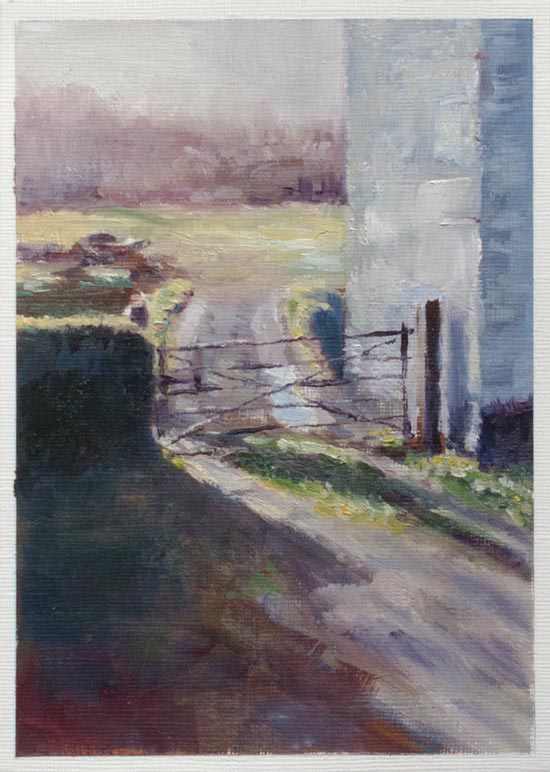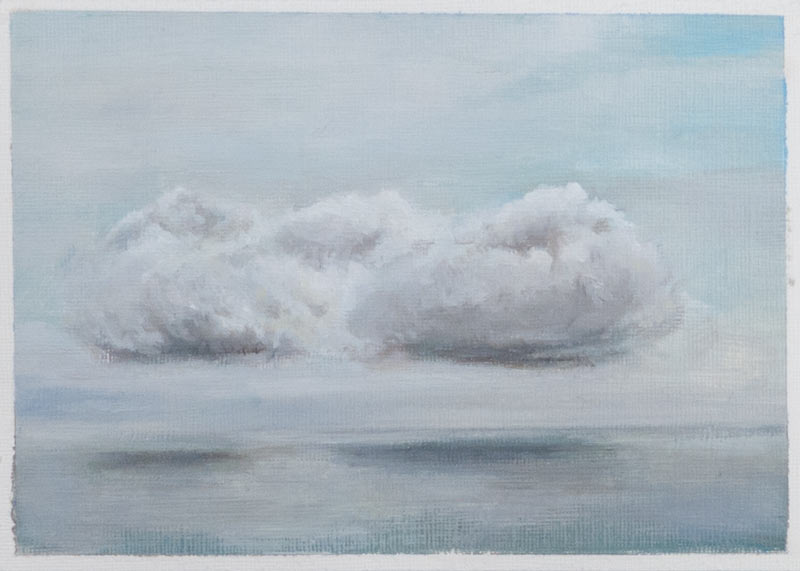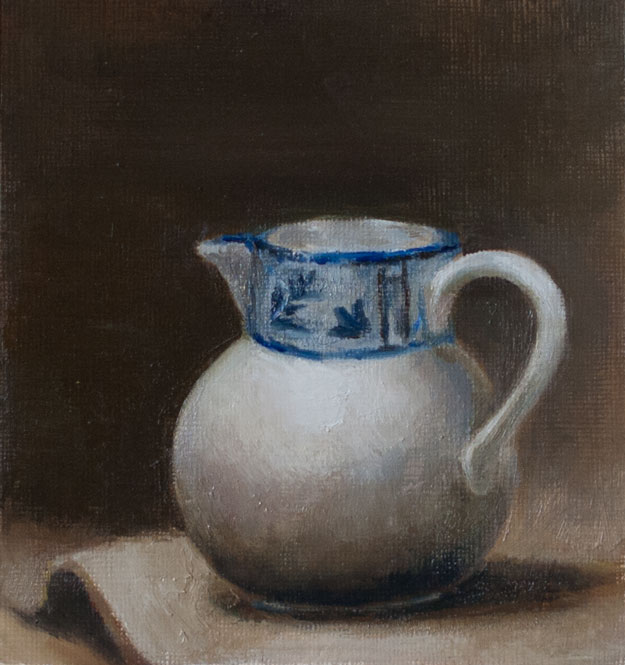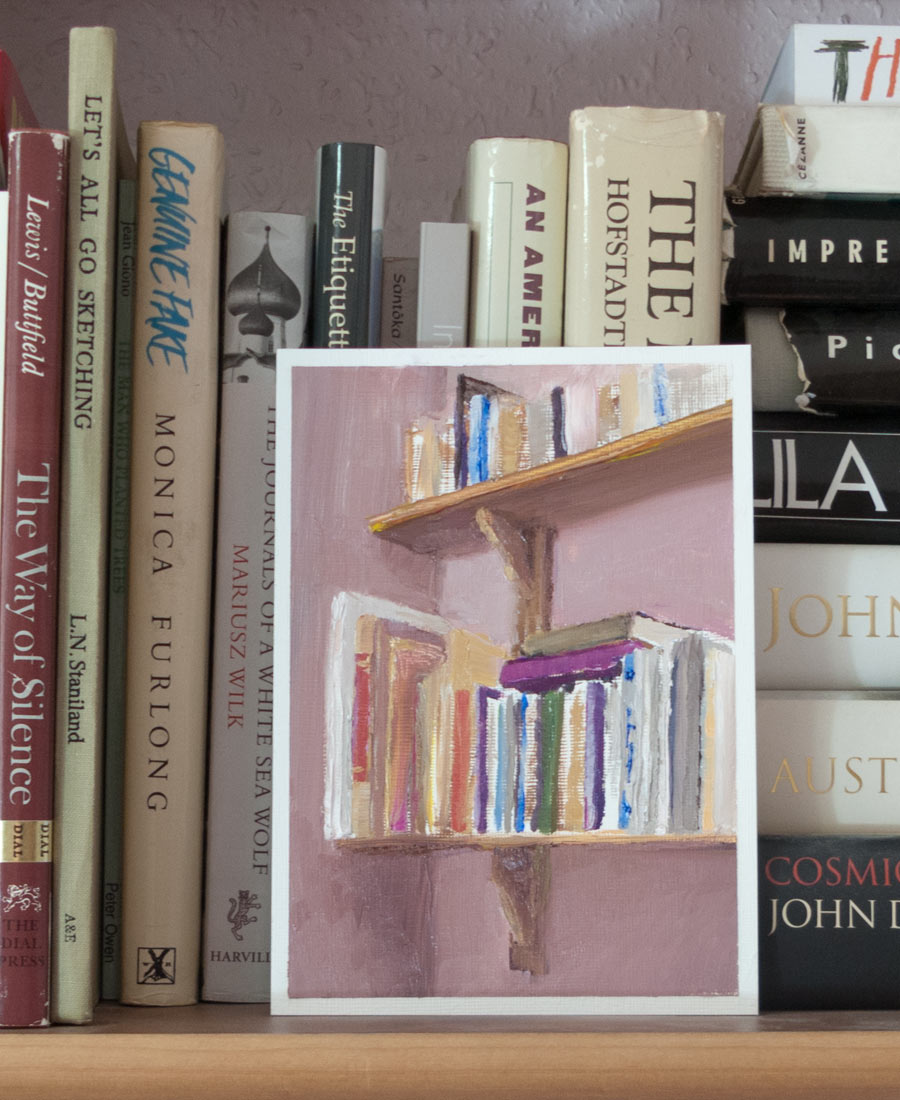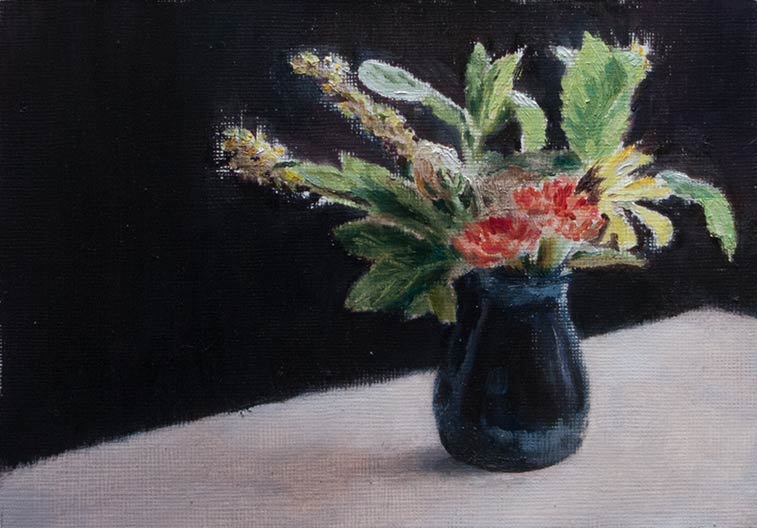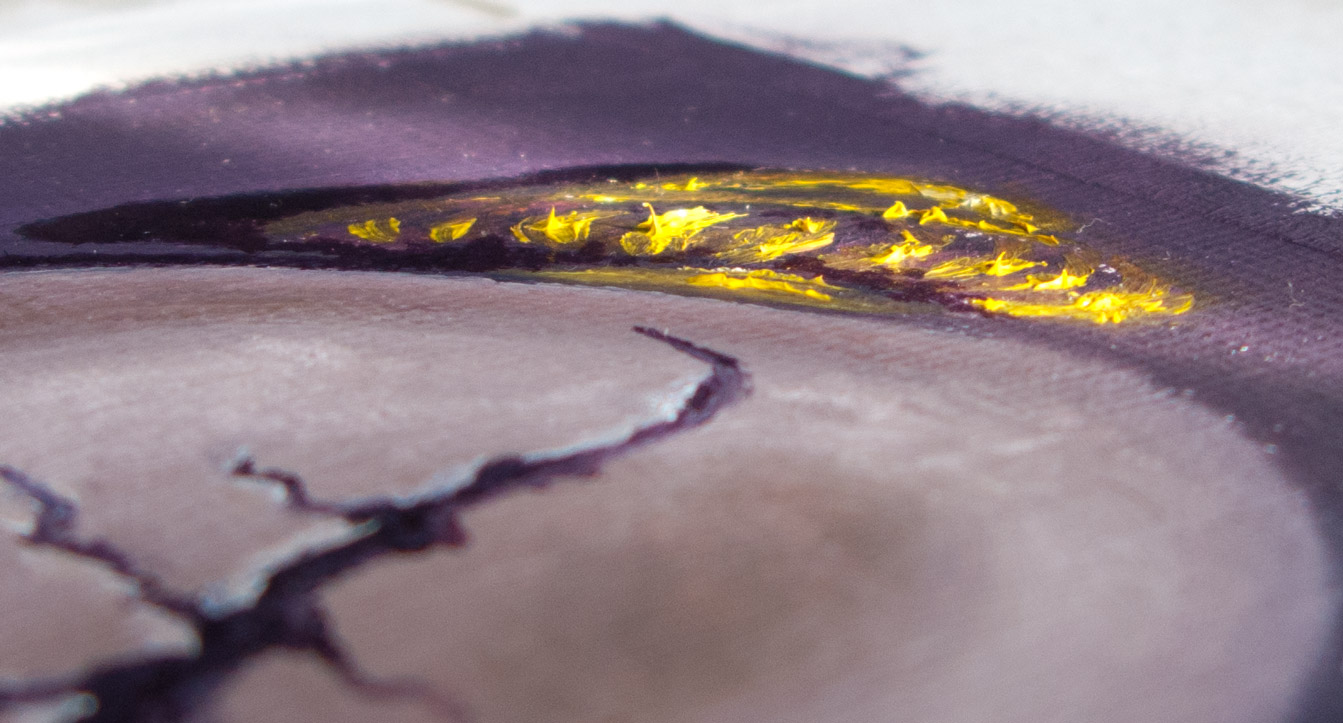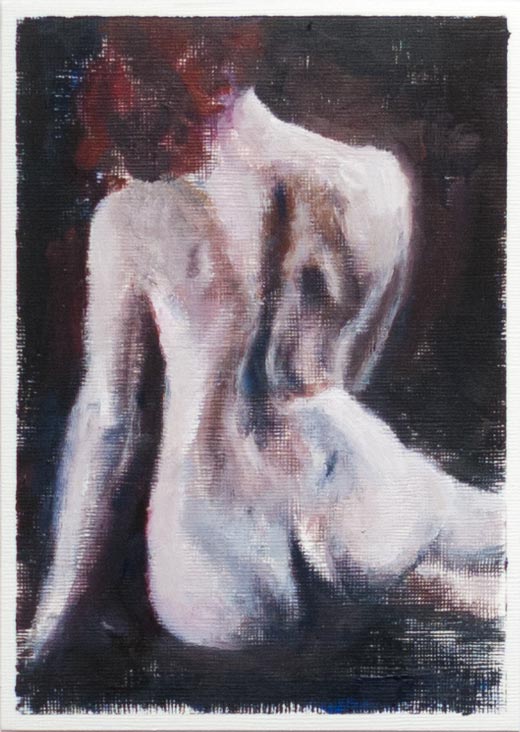
Oil on paper, model courtesy of New Masters Academy.
I was pleased with this one, not because I think it’s a good painting (the anatomy is questionable, and the finish is more like a rough underpainting) but because it was done quickly and spontaneously while using up leftover paint from the previous oil sketch. The revelation for me was that the paint could be overlaid, built up, corrected and modified without too many of the problems I’ve encountered before, such as underlying paint being dug up and polluting a newly applied colour. I applied the paint fairly thinly and kept two brushes on the go at the same time, one for dark paint, one for light. If a major correction needed to be done, such as moving a light edge further out into the dark background, I loaded slightly more paint on the brush and just went over the top. Old paint could be wiped or scraped back if necessary, but generally it seemed that the workability of the paint was due to the confidence of ploughing forward and not getting too fussy.
It was meant to be a monochrome sketch, the leftover colours being mixed into a mud, but the permanent rose and burnt umber created a kind of flesh tone and I added a bit of blue to the shadows.
I’m posting this as a reminder to myself to do more quick oil sketches and to be bolder with the paint. To see someone who really knows how to play with oils and revise and modify a painting, have a look at this short video by Duane Keiser.
